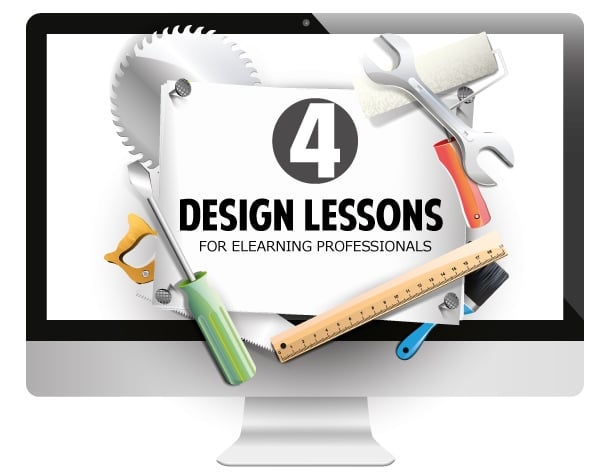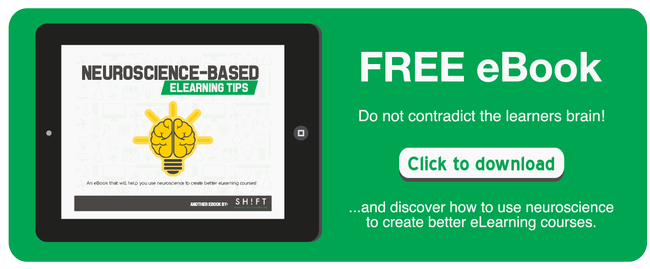You don't consider yourself as an expert on eLearning design. But you do treat design as a crucial aspect of eLearning and understand its importance. The proverbial question, however, still haunts you: how does one design an effective eLearning course?
Below are four essential lessons you should learn:

Lesson #1: Great Design is Getting People Do What You Want Them to
Design, first and foremost, is not about you. No effective eLearning designer succeeded by putting their own needs first. It’s always about learners, users, individuals who signed up for the course.
In the words of the world’s best marketer, Seth Godin, the goal is“ to create design that takes the user’s long-term needs and desires into account, and helps him focus his attention and goals on accomplishing something worthwhile.”
Take a look at your design. Does it make it easier for learners to do what you want them to? Get the right buttons in place so that learners can smoothly move on to the next page or slide. Organize your content in a readable format and be consistent all throughout.
Remember, your goal as an eLearning designer is to make them come back and finish the course. Every design element, from font sizes to images, should reflect such goal.
Lesson #2: Usable Design Considers People’s Emotions
Designing for emotions has always been part of the design tradition. Designers know that people’s emotions play a role in how they perceive and make use of a design.They also know that a particular design has the power to influence an individual’s emotions—that it can make people feel something strongly and then act.
So in designing your eLearning courses, ask first what you want learners to feel while they’re taking the course. Do you want them to feel accomplished after finishing every section? Or perhaps confident that they can complete the whole course?
Make sure your design generate these emotions. They will make your content more memorable, interesting and engaging. You can use emotionally-charged images but be careful not to overdo them. Or you can tell stories that evoke relevant memories.
Lesson #3: Design is Form and Function Combined
Steve Jobs, one of the few revolutionary icons, changed the way we think about how computers should look like—inside and out. He cared about how the innards of a computer should look. And he definitely paid meticulous attention to the outside appearance of every Apple device.
“Design is not just what it looks like and feels like. Design is how it works“ Jobs said. The company he once led is now known to not only design enchanting products but to design a user’s overallexperience when using an Apple device.
The lesson for any eLearning designer is remarkably straightforward. You have to care of both form and function— of how the design looks like and what the design attempts to achieve. Think of a car’s interior, which, by the way, serves as your interface. Everything is in its right place so that you can keep your eyes on the road and drive. The interface itself is designed to get you to your destination.
What about your learning interface? Will it help learners reach their destination too?
Lesson #4: Design is the Whole, the Sum Total of All Parts
Here’s how Sahil Lavingia, Pinterest’s founding designer, put it: Design isn’t just a visual style; it’s about the product as a whole.
Amateur designers may talk at length about readable fonts and types. Professional designers, however, move beyond that and a lot of other visual elements. Colors, sizes, backgrounds are all important parts. Your job is to take care of these parts while always keeping in mind the totality, or integrity, of your course.




